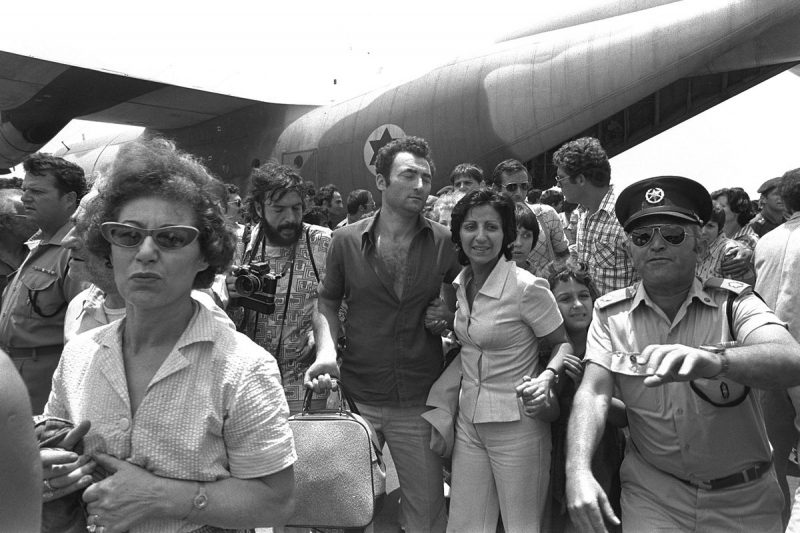On June 27, 1976, an Air France flight from Tel Aviv was headed to Paris. The plane was hijacked by Palestinian and German terrorists and forced to land at an airport in Entebbe, Uganda.
The 248 passengers and 12 French crew members were held hostage in a terminal until Israeli commandos pulled off a daring raid that has assumed mythical proportions and became the subject of numerous books and movies.
Israeli Prime Minister Benjamin Netanyahu will attend a ceremony in Entebbe to mark the 40th anniversary of the raid. He will be the first Israeli prime minister to visit Uganda since that date, and the first to visit sub-Saharan Africa since 1986.
The raid is considered one of Israel’s great military feats, and the event has forever changed the way governments confront terrorists.
The only Israeli soldier killed in the rescue was Netanyahu’s brother, Colonel Yonatan “Yoni” Netanyahu. The operation was renamed from Operation Thunderbolt to Operation Yonatan in his honor.
The raid marks the beginning of Netanyahu’s political career. After losing his brother, Netanyahu organized a conference on international terrorism in memory of him. Israel’s ambassador to the U.S., Moshe Arens, was impressed with Netanyahu and asked him to help explain to the world Israel’s case, known as “hasbara.” “And that is how I got into politics,” Netanyahu said.
In the 40 years since the operation, its near-failures and the successes have become subjects of debate. Historians have questioned some of the myths that have grown from the raid, including the role Yonatan actually played in the operation.
Members of the Popular Front for the Liberation of Palestine and the German Revolutionary Cells hijacked the plane and diverted it to Entebbe. Within days of landing, they moved the Israeli captives, numbering approximately 100, to a smaller room.
The hijackers demanded the release of Palestinian prisoners in Israel, including many in prison for murder. Some Israeli officials felt that giving in to terrorist demands would make the country appear weak. Others felt that a military operation so far away would be impossible.
Most of the non-Israeli prisoners were released by the fifth day. At that time, the Defense Minister, Shimon Peres, and his generals met to develop a plan of action.
At the core of the problem was how to transport 200 soldiers for seven hours in secrecy and then return to Israel with the hostages.
“It was a sophisticated and complex operation that we planned in less than 24 hours and carried out in less than 48 hours,” said Amnon Biran. At the time, Biran was a lieutenant colonel in the infantry and paratroopers command. Biran says, “I thought our chances were about 40/60 and we would come back with at least 40 coffins.”
Their plan was to land at Entebbe in the dark. A small team would enter the terminal to kill the hijackers. Other teams would secure the perimeter, take out the control tower, and take over the newer terminal. Later, they received orders to destroy the Ugandan fleet of MiG fighter jets. Commands would come from a Boeing airplane circling overhead. A medical team would be on standby in Nairobi.
The Israeli soldiers intended to drive past security to the old terminal by dressing as Ugandan soldiers in a Mercedes decorated like one Ugandan leader Idi Amin would use. Netanyahu felt that a sentry was suspicious, so he shot him. The shot failed to kill the guard, however, and a follow-up team killed the sentry in a round of gunfire. Those shots alerted the terrorists that something was going on.
Less than a minute later, Netanyahu was hit by sniper fire as the first team entered the terminal. Most witnesses say that the shot came from a sniper in the control tower. In all, 101 hostages were saved. Three were killed in the crossfire.
Idi Amin, upset at the actions of the Israelis, ordered the execution of Dora Bloch, an elderly passenger who had been taken to a hospital the day before.
The debate about the raid continues forty years later. Omer Bar-Lev led one of the assault teams. He says that every detail of the operation can be argued. “We know he shot the guard, but I don’t think it ruined the surprise. Today, we know that the terrorists heard the shots and thought we were Ugandan soldiers. They told the hostages to lie down — that actually helped us,” said Bar-Lev, who is now a member of the Knesset.
